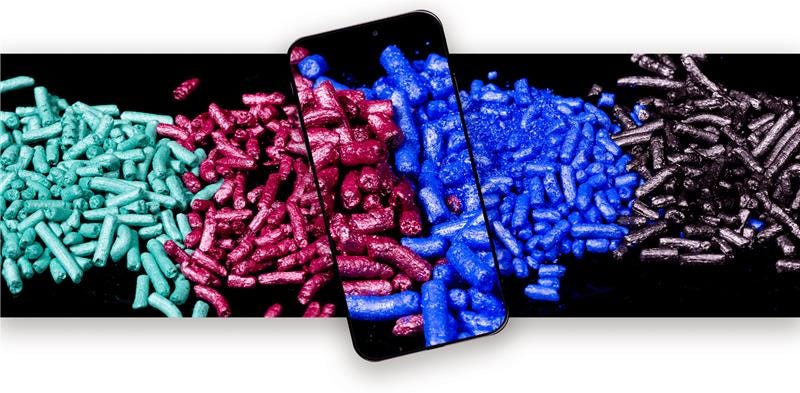Understanding the Science Behind Micronized Titanium Dioxide in Sunscreens
Sun exposure is one of the leading causes of premature skin aging, hyperpigmentation, and skin cancer. Daily UV protection is essential to maintaining healthy, youthful skin and preventing long-term damage caused by UVA and UVB rays. As a result, sunscreens and SPF-infused skincare products have become non-negotiable essentials in modern beauty routines.
For effective sun protection, formulators rely on UV filters—ingredients that either absorb, scatter, or reflect UV rays to reduce skin damage. Among these, mineral UV filters like Titanium Dioxide (TiO₂) are particularly valued for their broad-spectrum protection, safety profile, and photostability.
Titanium Dioxide (TiO₂) as a Widely Used Mineral UV Filter in Sunscreens
Titanium Dioxide (TiO₂) is a physical (inorganic) UV filter that works by reflecting and scattering UV radiation, preventing it from penetrating the skin. It is one of the most widely used sunscreen ingredients due to its:
-
Broad-spectrum protection – Effectively blocks UVB rays and some UVA rays.
-
Photostability – Unlike some chemical UV filters, TiO₂ does not degrade with sun exposure.
-
Gentle and non-irritating – Suitable for sensitive skin, children, and daily SPF formulations.
-
Regulatory approval – Recognized as a safe and effective UV filter by the FDA, EU, and global authorities.
However, traditional Titanium Dioxide has some challenges, such as its opaque white appearance and potential formulation instability. This is where micronized Titanium Dioxide comes in as an advanced solution for modern SPF formulations.
Micronized Titanium Dioxide and Its Role in Modern SPF Formulations
Micronized Titanium Dioxide (TiO₂) is a smaller particle-size version of traditional Titanium Dioxide, designed to improve its transparency, dispersion, and formulation aesthetics while maintaining its high SPF efficacy. Unlike traditional TiO₂, which can leave a visible white cast on the skin, micronized TiO₂ provides UV protection without significantly altering the appearance of formulations.
Micronization is achieved by reducing the particle size of Titanium Dioxide to the micron or sub-micron level, making it more suitable for cosmetic and sun care applications where aesthetics matter just as much as performance.
Rutile vs. Anatase Forms of Titanium Dioxide
Titanium Dioxide exists in two main crystalline forms: Rutile and Anatase. While both forms offer UV protection, rutile is the preferred choice for sunscreen formulations due to its:
- Higher refractive index, making it more effective at reflecting UV rays.
- Greater photostability, meaning it does not degrade or generate free radicals when exposed to sunlight.
- Lower photocatalytic activity, reducing the risk of oxidative damage to the skin and other formulation components.
Anatase TiO₂, in contrast, has higher photocatalytic activity, which can lead to instability and potential skin irritation in cosmetic applications. This is why rutile-grade, micronized Titanium Dioxide is the gold standard in SPF formulations.
How Micronization Enhances Formulation Versatility Without Compromising SPF Performance
The micronization process provides significant formulation advantages by optimizing the balance between UV protection, transparency, and skin feel.
- Improved Transparency:
- Traditional Titanium Dioxide is known for its chalky, white appearance.
- Micronized versions significantly reduce whitening, making them suitable for all skin tones.
- Enhanced UV Protection:
- Smaller TiO₂ particles increase surface area, enhancing UV scattering and absorption efficiency.
- Micronized Titanium Dioxide still maintains broad-spectrum UV protection, particularly against UVB rays.
- Better Skin Feel & Spreadability:
- Micronized TiO₂ creates lighter, smoother formulations that feel comfortable on the skin.
- It disperses more evenly, preventing clumping or streaking in sunscreen applications.
- Greater Compatibility with Cosmetic & Skincare Products:
- Works well in oil-based and hybrid formulations (SPF moisturizers, BB creams, foundations).
- Stable and non-reactive, making it ideal for long-wear sunscreens and color cosmetics.
By leveraging micronized Titanium Dioxide, formulators can create elegant, high-performance SPF products that meet modern consumer demands for invisible, lightweight, and effective sun protection.
How Particle Size Affects UV Protection, Transparency, and Formulation Aesthetics
Particle size plays a critical role in determining the UV protection, efficacy, and cosmetic elegance of Titanium Dioxide-based sunscreens. Micronized Titanium Dioxide offers a balance between broad-spectrum protection, formulation stability, and transparency, making it a preferred choice for modern SPF formulations.
Why Micronization Improves SPF Efficacy
Reducing the particle size of Titanium Dioxide enhances UV protection and formulation aesthetics in several ways:
- Increased Surface Area for Better Light Scattering
- Smaller particles scatter and reflect UV rays more effectively, leading to higher SPF performance.
- The increased surface area ensures better coverage and uniformity, which reduces gaps in UV protection.
- Higher SPF Performance with a Lighter Feel
- Traditional Titanium Dioxide (larger particles) can create a heavy, chalky feel on the skin.
- Micronized Titanium Dioxide allows for higher SPF ratings while maintaining a lightweight texture, improving user experience.
Particle Size and Cosmetic Elegance: Why Micronized TiO₂ is Preferred
One of the biggest challenges with mineral sunscreens is maintaining an elegant, lightweight feel without compromising UV protection. Traditional Titanium Dioxide (TiO₂) has long been associated with a chalky white cast, heavy textures, and difficult formulation compatibility. However, micronized Titanium Dioxide offers a game-changing solution, enhancing both cosmetic appeal and formulation performance.
Transparency & Avoiding the White Cast Issue
One of the most noticeable drawbacks of traditional TiO₂ is its high opacity, which results in a visible white cast on the skin—especially on darker skin tones. This is due to larger TiO₂ particles scattering visible light, making sunscreens appear stark white.
How Micronization Solves This Problem:
- Smaller particle sizes significantly reduce the whitening effect while still delivering strong UV protection.
- Micronized TiO₂ blends seamlessly into the skin, creating a more transparent and wearable sunscreen.
- Suitable for all skin tones, making SPF products more inclusive and appealing to a broader audience.
Consumer Benefit: People are more likely to use sunscreen daily when it looks and feels natural on their skin—micronized Titanium Dioxide helps achieve this!
Texture & Skin Feel
Consumers expect sunscreens to feel lightweight, breathable, and comfortable, rather than thick, greasy, or heavy. Micronized TiO₂ contributes to a smoother, silkier texture, making sunscreen formulations more appealing for daily wear.
Advantages of Micronized TiO₂ for Texture & Application:
- Lighter, more fluid formulations – Reduces the thick and pasty feel of traditional mineral sunscreens.
- Non-greasy finish – Works well in modern SPF formulations that emphasize a matte or natural finish.
- Improved spreadability – Ensures even application without streaking.
- Ideal for hybrid formulations – Works well in SPF-infused skincare, BB creams, and tinted sunscreens.
Consumer Benefit: Sunscreens with micronized TiO₂ feel more like skincare—hydrating, smooth, and easy to wear under makeup or alone.
Stability in Formulations
A sunscreen’s efficacy and consistency depend on how well the active ingredients disperse within the formula. Poor dispersion can lead to clumping, uneven SPF coverage, and unstable emulsions.
How Micronized TiO₂ Improves Stability:
- More uniform dispersion, preventing aggregation and ensuring consistent SPF performance.
- Better compatibility with oil-based formulations, making it easier to incorporate into various carrier systems.
- Enhanced water resistance, making it ideal for sports sunscreens, beach formulas, and long-wear daily SPF.
Formulator Benefit: Micronized Titanium Dioxide is easier to work with, leading to smoother, more stable, and visually appealing formulations.
Safety & Regulatory Considerations for Micronized Titanium Dioxide
As the demand for effective and safe UV protection grows, micronized Titanium Dioxide (TiO₂) has become a go-to ingredient in modern sunscreens. However, safety and regulatory compliance remain top concerns for formulators and consumers alike. The good news? Micronized TiO₂ is widely recognized as safe and effective by leading regulatory bodies worldwide.
Is Micronized TiO₂ Safe?
Micronized Titanium Dioxide is approved for use in sun care products by multiple regulatory agencies, including:
- FDA (U.S. Food & Drug Administration) – Recognized as a safe and effective sunscreen ingredient.
- EU Cosmetic Regulation – Approved as a UV filter in cosmetic products with defined particle size restrictions.
Does Micronized TiO₂ Penetrate the Skin?
One common concern with small-particle UV filters is the risk of skin penetration and systemic absorption. However, research has shown that micronized Titanium Dioxide remains on the outermost layers of the skin, forming a protective barrier against UV rays without entering the bloodstream.
Studies confirm that micronized TiO₂ particles do not reach viable skin cells, making them safe for daily sun protection.
Unlike some chemical UV filters, it does not cause hormonal disruption or irritation, making it suitable for sensitive skin, children, and reef-safe sunscreens.
Compliance with Global Regulations
When formulating with micronized Titanium Dioxide, it’s essential to follow regional regulatory guidelines to ensure compliance and market acceptance.
- Maximum Use Level in U.S. OTC Sunscreens
- The FDA allows Titanium Dioxide in over-the-counter (OTC) sunscreens at a maximum concentration of 25%.
- This makes it one of the highest-approved use levels for a mineral UV filter in U.S. sunscreen formulations.
- Banned Combinations: Cannot Be Used with Avobenzone in the U.S.
- Titanium Dioxide and Avobenzone (a chemical UVA filter) cannot be combined in U.S. sunscreens.
- This restriction is due to instability issues when both ingredients are used together.
Formulating with Micronized Titanium Dioxide for Optimal Performance
Micronized Titanium Dioxide (TiO₂) is a versatile and effective UV filter, but to fully optimize its SPF performance, transparency, and formulation stability, formulators must follow specific best practices. From proper dispersion to compatibility considerations, here’s how to ensure optimal results when incorporating micronized TiO₂ into sun care, skincare, and makeup formulations.
Best Practices for Dispersing Micronized TiO₂ in Sunscreen Formulations
Micronized Titanium Dioxide must be properly dispersed to achieve maximum UV protection and formulation stability. Unlike traditional TiO₂, which can be challenging to blend uniformly, micronized versions require careful processing to prevent clumping or uneven distribution.
Key Dispersion Techniques:
- Pre-dispersing in oils – Helps ensure smooth, even dispersion before adding to the final formulation.
- High-shear mixing – Prevents agglomeration and uneven distribution of particles.
- Using dispersing agents or surface-treated versions – Some micronized TiO₂ grades come hydrophobically treated (e.g., coated with Aluminum Hydroxide & Stearic Acid) for better dispersibility in oil-based systems.
Tip: Avoid adding micronized TiO₂ directly into water without an appropriate dispersing aid, as it may lead to poor suspension and instability.
Oil-Phase Incorporation and Homogenization Requirements
Because micronized Titanium Dioxide is hydrophobic, it is best incorporated into the oil phase of emulsions. This ensures:
- Uniform distribution throughout the formula, reducing streaking or patchiness.
- Enhanced stability, especially in long-wear or water-resistant sunscreens.
- Optimized SPF performance, as proper dispersion maximizes UV reflection and absorption.
Key Formulation Guidelines:
- Add micronized TiO₂ to the oil phase of emulsions before emulsification.
- Use high-shear homogenization to ensure even distribution.
- Combine with film-forming agents or stabilizers to enhance water resistance.
Tip: For hybrid formulations (e.g., SPF foundations or tinted moisturizers), micronized TiO₂ can be pre-dispersed in esters or silicones to improve skin feel and blendability.
Ideal Applications: Where Micronized TiO₂ Excels
Micronized Titanium Dioxide is incredibly versatile, making it an excellent choice for a variety of SPF-infused formulations.
Suncare:
- High-SPF mineral sunscreens.
- Water-resistant and reef-safe formulations.
- Baby and sensitive skin sunscreens.
Skincare with SPF:
- Daily SPF moisturizers and serums.
- Anti-aging skincare with UV protection.
- BB creams and tinted sunscreens.
Hybrid Makeup SPF Formulations:
- SPF-infused foundations and pressed powders.
- Tinted primers and setting sprays with UV protection.
- SPF lip balms and color cosmetics.
Tip: For a seamless finish in color cosmetics, micronized TiO₂ can be combined with iron oxides or pearl pigments to create SPF-infused, skin-tone-matching products.



